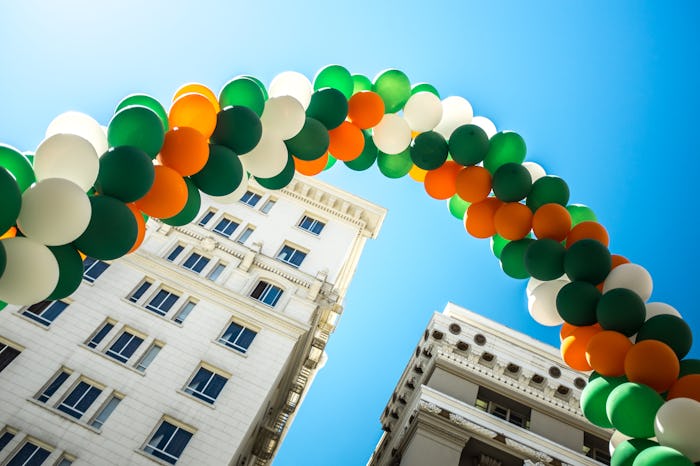The idea of St. Patrick’s Day probably conjures up images of the emerald isle, leprechauns, and snakes (and maybe a shillelagh or two). But why do we celebrate St. Patrick’s Day, after all? I mean, any excuse for green beer is fine, but the story behind this festive holiday is actually pretty fascinating, as it involves dream visions and pirates.
First, St. Patrick was a real person. Born in Roman Britain, he was captured by Irish pirates (yes, you read that correctly) and enslaved as a shepherd in Ireland, as noted in Catholic Online. At this time, Ireland was still a pagan land. After God communicated to Patrick in a dream, he escaped back to England. He was then ordained as a priest and, following another vision, returned to Ireland in March of 233 A.D. Legend has it the Irish chieftains tried to kill him outright, but Patrick was able to convert them — and thousands of others in Ireland — to Christianity. After 40 years of travel, preaching, and conversion, he passed away on March 17, 461. And that date has been celebrated as St. Patrick’s Day ever since.
So how did the story of man who was captured by pirates, enslaved, and determined to convert an entire country to his religion inspire into this holiday that’s all about green and shamrocks? Well, any holiday that’s been around for about 1,500 years is bound to go through some changes. Here’s a look at the ways people celebrate St. Patrick’s Day, and how to avoid getting pinched.
1Wear Green (Or Get Pinched)
Ever forget to wear green on March 17? Otherwise sane people will go out of their way to pinch you. "It's an American tradition that dates back to the 1700s," Luke Ahearn, owner of the Irish Cultural Museum, explained to WGNO. "Apparently, leprechauns can't be seen. They're mischievous, so people pinch you to remind you that if you're not wearing green, you'll get pinched by a leprechaun." And, according to the Latin Times, wearing green makes you invisible to leprechauns, so your best bet is to choose something in an emerald hue for that day.
2Rock The Shamrocks
Shamrocks appear on everything from body jewelry to cupcakes this time of year. "According to St. Patrick's Day lore, Patrick used the three leaves of a shamrock to explain the holy trinity: the Father, the Son, and the Holy Spirit," as explained in National Geographic. Today, images of St. Patrick often feature shamrocks and St. Patrick's Day revelers wear a shamrock out of tradition.
3Drink
Whether you opt for beer with food coloring or a full pint of Guinness (AKA "a loaf of bread in a glass"), chances are your St. Patrick's Day celebration will involve some type of adult beverage. As explained in Investopedia, there's a legit reason people drink on St. Patrick's Day. "As legend has it, Pota Phadraig (translated to Patrick's Pot) is celebrated to remember St. Patrick's persuasion of a stingy innkeeper to fill his patrons' glasses to overflowing," the site says. "Naturally, whiskey was the drink of choice." So if you're feeling traditional, opt for some Jameson. And if you aren't feeling the alcohol this year, there's always the Shamrock Shake.
4Religious Services
St. Patrick's Day is still a Holy Day of Obligation for many Christians, so attending church on that day — on whatever day of the week it occurs — is very common. Many Irish attend religious services on March 17 to honor their patron saint.
5Feasts
While the early St. Patrick's Day revelers probably didn't chow down on neon green cupcakes, the holiday has long been celebrated as a feast day. Traditional Irish foods, such as corned beef and cabbage, or literally anything involving potatoes, are common.
6Green Rivers
Sometimes pinning a shamrock to your lapel just isn't enough. The Chicago River is famously dyed green every March, but many other cities, from Indianapolis to Tampa, also dye large bodies of water green in celebration of the holiday. It may be the strangest St. Patrick's Day tradition of all.
7Parades
Cities around the world host amazing St. Patrick's Day parades. "A half million revelers line the 1.6-mile (2.7-kilometer) route" for the parade in Dublin, as National Geographic reported. Bagpipers and horses kick off the giant parade in Chicago, and Boston's celebration features thousands of marchers. Furthermore, the New Orleans parade features float riders who throw green beads and cabbages to the crowds. Cities in other countries, such as Cabo Roig, Spain, and Auckland, New Zealand, also feature parades and revelries.
